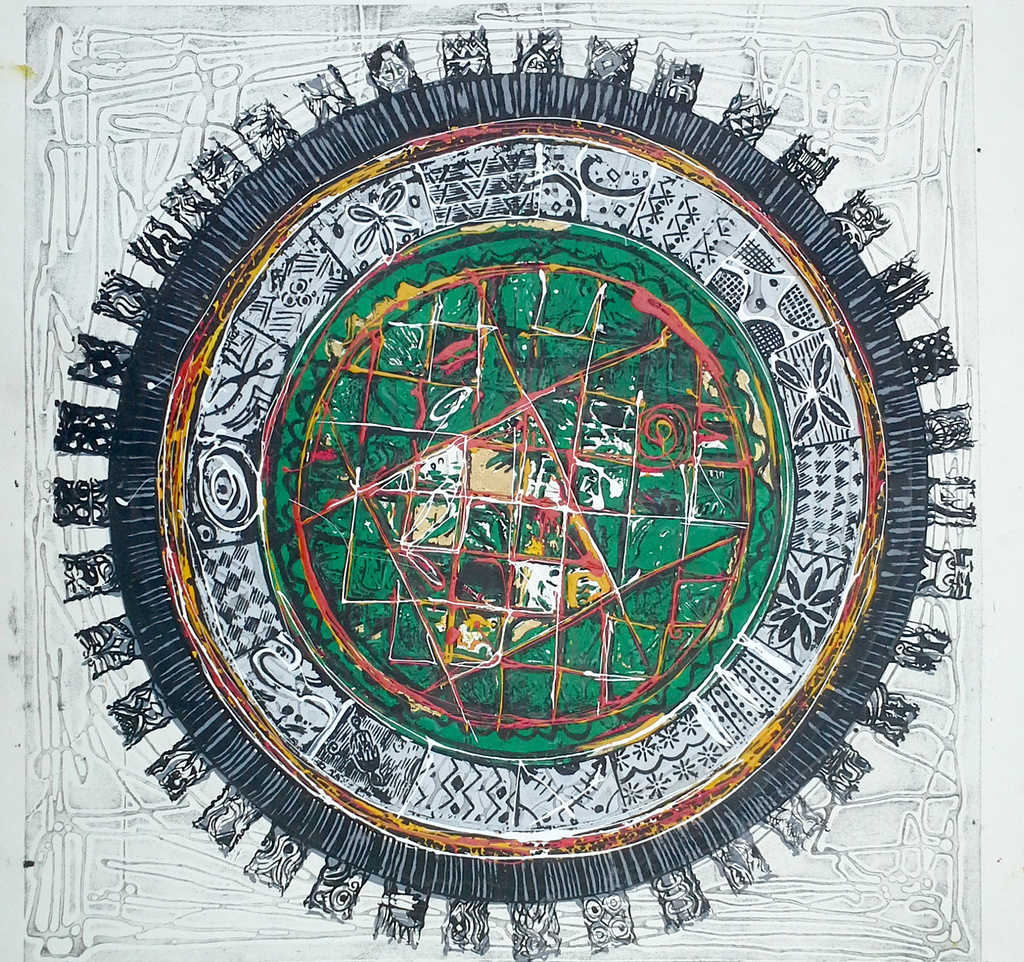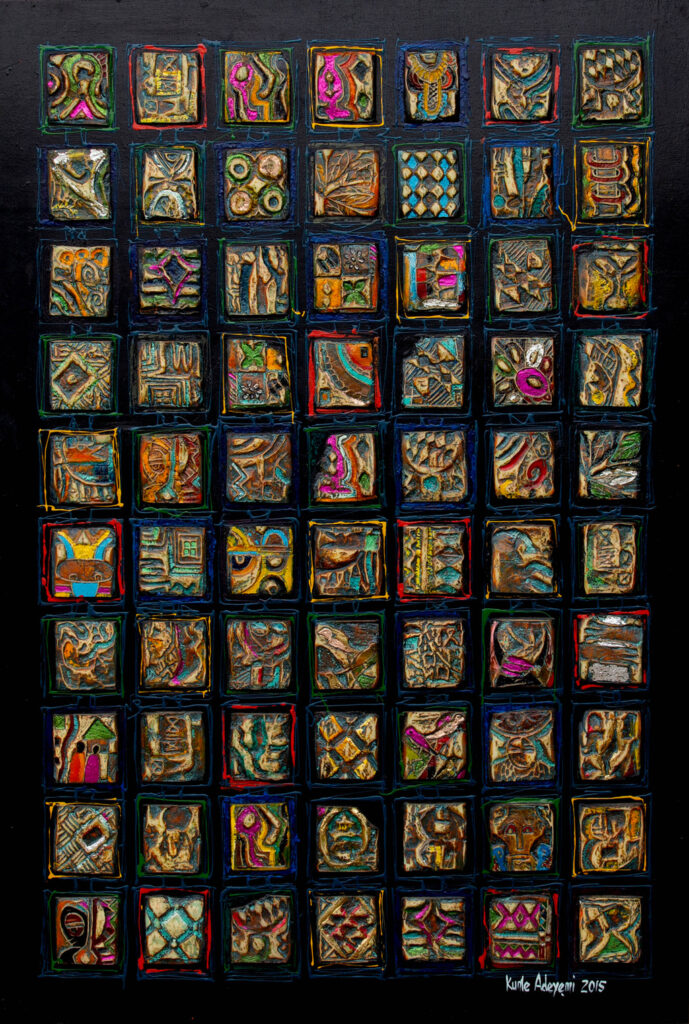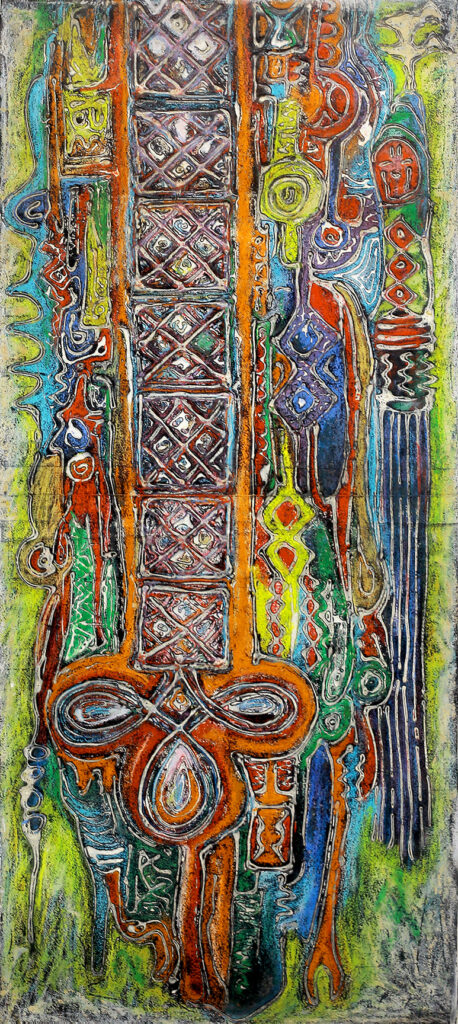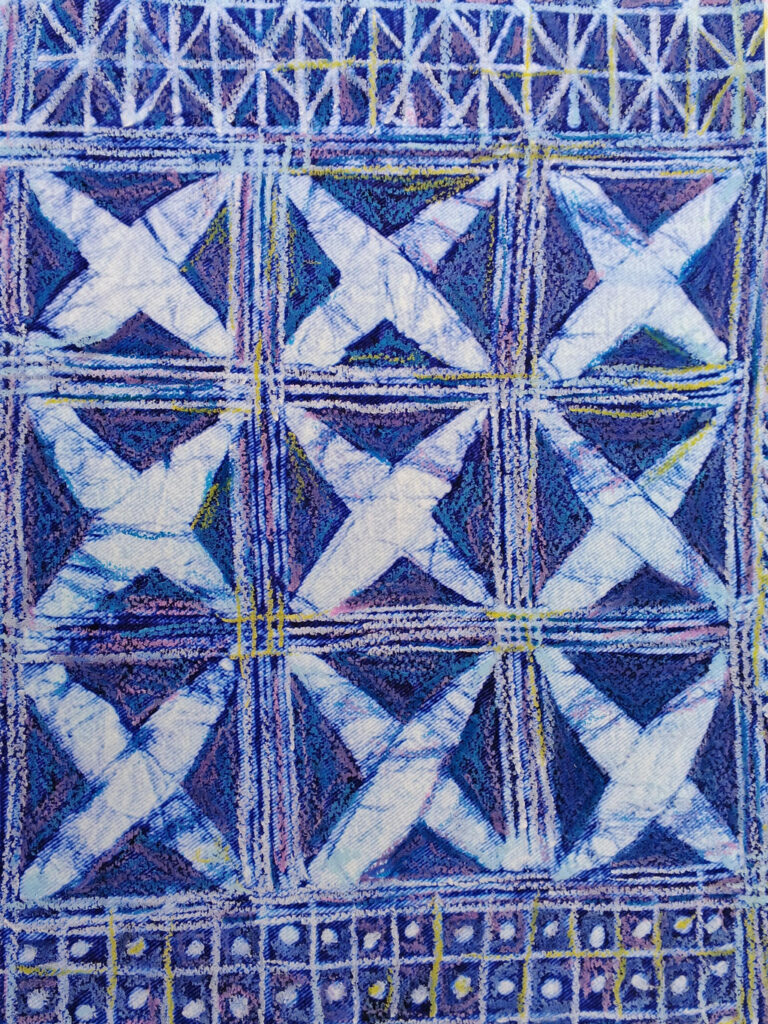Augustina Boateng writes about a generation of printmakers, including Dr Kunle Adeyemi, whose confidence is reflected in a new confident generation of African museums.
(A message to the reader.)
Across West Africa, a quiet but seismic shift is reshaping the region’s arts and museum culture. West Africa, long considered static repositories of colonial-era artifacts by Western art critics and mainstream media, is challenging the historical frameworks of art and expression, sparking a transformation not just in its new take on creating art that expresses and portrays the authenticity of African culture but in the very idea of what it means to preserve and present African art today. As art institutions around the region undergo a transformative move to reclaim narratives and display an accurate cultural identity, they are also asserting agency in a global cultural art discourse that has long been steered by Western institutions.
A representation of this transformation is the Eight Printmaking Grandmasters exhibition, at Fobally Art Gallery in Lagos, Nigeria (10-30 August 2025), The event hosts some of the region’s most influential printmakers and pay tribute to the revolutionary vision of Uche Okeke, Solomon Wangboje, and Bruce Onobrakpeya, the trailblazing Zaria Rebels who defied colonial art norms in the 1950s and radically redefined the course of modern African art and printmaking in the region. Arts and printmaking in colonial art schools mirrored European styles, perspective, and realism. “The Zaria Rebels” gained notoriety when they challenged the idea that African art had to mimic European standards to be legitimate or progressive. They felt the curriculum disconnected them from their own cultures and visual traditions. Bruce Onobrakpeya, one of the Zaria Rebels, introduced abstract motifs drawn from Nigerian folklore and traditional patterns, such as Urhobo mythological figures and uli or nsibidi symbols, but basically, prints were no longer about imitating form but expressing cultural identity after that. The exhibition, intended as a celebration of the region’s traditional technique, displays a bold interrogation of African art’s identity in modern times, inspired by the Zaria Rebels’ legacy and new contemporary techniques.
As renowned printmaker Dr. Kunle Adeyemi notes, “The Zaria Rebels preached on the use of natural synthesis, which experiments with different forms, motifs, and patterns; these materials are often sourced locally. All these processes and methods inspired by the rebels can be seen today in West African modern art. As artists, most art and prints we see today are heavily influenced by our culture and environment, as our artwork today is curated for local audiences and not necessarily for the Western gaze.” “The essence of my work,” continued Dr. Adeyemi, “is to document and tell the stories of who we are by using locally sourced materials, which gives it a unique and traditional essence.” The legacy of the Zaria Rebels lives on through a new generation of influential artists, some of whom will be showing their work at the exhibition. But more than a showcase, this exhibition offers a view into the broader cultural shifts, a new gaze in many ways, one that centers African arts and prints and how their contribution is shaping how African art is expressed and presented.
The ongoing revaluation of the art space in West Africa has welcomed new contemporary artists who draw inspiration from African culture in their work. Among them is Adedamola Onadeko, a contemporary printmaker whose practice offers a powerful reflection on these evolving narratives.
“The Zaria Rebels were known for blending traditional African themes with contemporary techniques. Like them, I employ vibrant, bold colors, moving away from colonial art norms to embrace a dynamic, African-inspired palette. The incorporation of natural elements, such as flora and fauna, is a direct nod to the Rebels’ emphasis on indigenous themes and cultural identity. Ultimately, my works embody the spirit of innovation and cultural exploration championed by the Zaria Rebels, celebrating and amplifying African voices.”
- Dr Kunle Adeyemi, Symbols & Forms, 2015, paintocast, 84”x37.5”
- Dr Kunle Adeyemi, Traditional Motifs & Forms, 2003, additive plastograph, 48.5”x 21”
- Dr Kunle Adeyemi, Adire Forms Motifs II, 2025, additive paintograph 14.5×10.5
- Dr Kunle Adeyemi Adire, Forms Motifs I, 2025, additive paintograph, 14.5×10.5
At the heart of this transition is a renewed emphasis on local storytelling. Institutions like the Museum of Black Civilizations in Dakar and the Musée Théodore Monod have embraced community-led exhibitions and multi-language labels, and are disrupting the traditional hierarchies between curators and the public. Nigeria’s soon-to-launch Museum of West African Art (MOWAA) in Benin City, led by Tanzanian-born architect Sir David Adjaye, aims to challenge Eurocentric models of exhibition and instead prioritize African modes of storytelling through art. The Edo Museum in Benin City is intended to move beyond traditional Eurocentric exhibition models, which often isolate objects in sterile displays with limited cultural context. Instead, these displays will embrace African modes of storytelling that are communal and layered in African history. Unlike conventional Western museums that typically separate art from its lived or intended function, newly built museums like the MOWAA are intended to focus on restoring the narrative context by treating artifacts as active carriers of history, performance, and identity. The displays intended for the MOWAA will emphasize narrative and relationships, not just individual object aesthetics, mirroring the way art is experienced in festivals and oral traditions. The new progress in the revaluation of West African arts and crafts is not just about mere exhibition halls. Rather, it is intended as a dynamic space of education, activism, and cultural regeneration. Think of spaces like the Nubuke Foundation in Accra or the Centre for Contemporary Art in Lagos that offer alternative models for exhibition and education outside the Western gaze.
New academic programs and pan-African cultural policies and initiatives are embedding restitution within broader movements for historical justice, education, and economic regeneration.
The movement towards the restitution of looted African artifacts was galvanized by landmark efforts such as the 2018 Sarr-Savoy report, which was a groundbreaking document commissioned by the French government that called for the full restitution of African cultural heritage looted during the colonial era. This captured headlines and reignited local demands for accountability and ownership. But beneath the surface of high-profile returns like the Benin Bronzes was a more radical and enduring shift not just about restitution, but about reimagining ownership, memory, and cultural sovereignty. This shift is enduring because it is no longer solely dependent on Western institutions’ willingness to return artifacts. Instead, it is being pushed by a growing network of African scholars, curators, and activists who are building their own museums, archives, and digital repatriation projects. New academic programs and pan-African cultural policies and initiatives are embedding restitution within broader movements for historical justice, education, and economic regeneration. These efforts reflect a long-term, systemic commitment to reclaiming narrative power, not just objects. West African institutions are rethinking not only what was taken away but also the endured history, what is now displayed and how culture itself is curated, preserved, and experienced throughout the decades of reparations and art evolution in the region.
Digital technology is further amplifying this shift in African art expression and preservation. Archiving projects like the Savama-DCI’s digitization of Timbuktu manuscripts and the Museum Futures Africa platform have been working to create open access to cultural treasures that were previously locked away in colonial archives, that is, in Western museums, or inaccessible local collections. By supporting the digitization and documentation of African cultural heritage, the platform enables museums across the continent to share collections online, collaborate across borders, and engage communities in storytelling and curatorial decision-making. This initiative not only challenges the gatekeeping of African history but also builds a decentralized, accessible network of knowledge and heritage that empowers local institutions and communities to reclaim and reinterpret their pasts on their own terms. The Museum Futures Africa platforms are providing open access to cultural treasures that were previously locked away. This approach is used to virtually exhibit art that institutions often bypass as traditional, allowing audiences to connect and engage indirectly.
As the global art world still grapples with its colonial legacies and restitution, West Africa has moved past the offers. The offers of conditional returns and long-term loans often proposed by European institutions were arrangements that framed restitution as a favor rather than a right. These offers, which have been proposed over the decades, typically came with restrictions on ownership, display, or conservation and were seen by many as attempts to retain control over African heritage even while appearing conciliatory to modern art innovation. A way forward for West African arts has become a struggle to blend tradition and survival into its work by setting up measures that ensure its longevity, previous history, and survival, and perhaps that is the most radical form of restitution of all. A new gaze at the art scene across West Africa doesn’t simply mean looking at West African art differently. It means shifting the locus of art identity, allowing African voices, artists, historians, and storytellers to shape how culture is shared and interpreted.
About Augustina Boateng
 Augustina Boateng is a writer living in the UK whose work bridges science, society, and culture. She has written for a wide range of online and print publications, often delving into the intersections of global health, biotechnology, climate change, and cultural innovation. Connect on linkedin.com/in/augustina-boateng-972575101/.
Augustina Boateng is a writer living in the UK whose work bridges science, society, and culture. She has written for a wide range of online and print publications, often delving into the intersections of global health, biotechnology, climate change, and cultural innovation. Connect on linkedin.com/in/augustina-boateng-972575101/.






